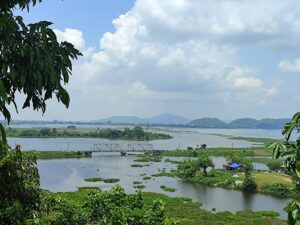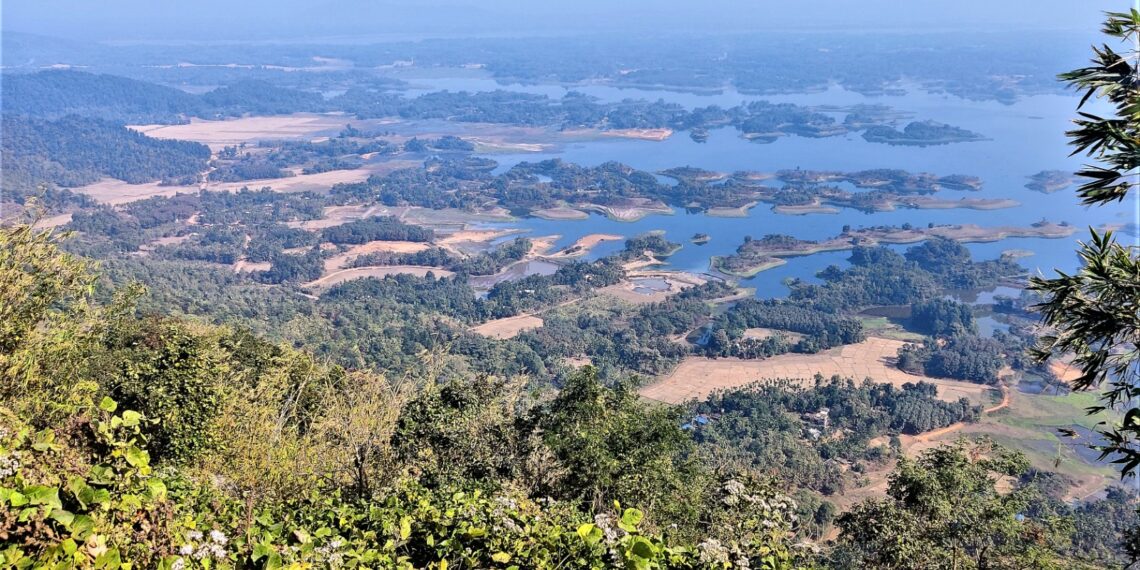Today is World Wetland Day (WWD) and the theme of celebration of the WWD for this year is ‘wetland and human wellbeing’. The WWD is observed every year on February 2 to commemorate the anniversary of an international treaty called the ‘Convention on Wetlands’, which was signed by a number of countries of the world on February 2, 1971, in a place called Ramsar in Iran.
This convention, also known as the Ramsar Convention is an intergovernmental mechanism that provides the framework for the conservation and wise use of wetlands and their resources globally through national action and international cooperation.
With 172 member countries at present, the Convention has designated 2471 number of wetlands all over the world as ‘Wetlands of International Importance’.
These wetlands are also popularly referred to as Ramsar Wetlands or Ramsar Sites. The Ramsar Sites, distributed all over the world, occupy a total surface area of about 256 million hectares.
India has 75 such Ramsar Sites. The northeast Indian region has only three – Deepor Beel in Assam, the Loktak Lake in Manipur, and the Rudrasagar Lake in Tripura.

Wetlands are land areas submerged by or saturated with water which have a land water interface and a distinct ecosystem of themselves. They can be natural or human-made, inland, or coastal, permanent, or temporary, static, or flowing, vegetated or non-vegetated.
Globally wetlands are categorized into three classes – Inland wetlands (swamps, marshes, lakes, rivers, underground aquifers, floodplains, peat lands, and wet grasslands); Coastal wetlands (saltwater marshes, estuaries, deltas and tidal flats, mangroves, lagoons, and coral reefs) and human-made wetlands (household ponds, tanks, fish/farm ponds, rice or paddy fields, and salt pan).
The wide range of ecosystem services provided by wetlands contributes significantly to human well-being in myriads of ways. Wetlands cover 7 percent of the earth’s total surface area, and they yield 45 percent of the total natural productivity and ecological services of all natural ecosystems on the planet.
Globally, the areal extent of wetland ecosystems ranges from 1.5 to 1.6 billion hectares with an estimated economic value of the benefits accrued to humankind of about US$20 trillion a year.
Wetlands support 40 percent of the planet’s plant and animal species on just 7 percent of the earth’s area. They shelter more biodiversity than terrestrial forests and create exceptionally rich diversity of aquatic plants and organisms.
Over 140,000 species of the world including 55 percent of all fishes – rely on wetlands and associated freshwater habitats for their survival. About 12 percent of the globally threatened bird species depend on wetlands as habitats. They also facilitate clean water supply and help in ground water recharging.
Wetlands provide various goods such as food, fibre, and raw materials and services for many different uses of human beings and overall sustenance of human societies. They add recreational and educational value to the landscapes they belong to.
Wetlands are a common source of food and livelihoods to poor and marginalized communities living in rural areas.
In the present context of the increasing adverse impact of climate change and natural hazards, wetlands have gained more traction in the global conservation and policy agenda because of their unique role in facilitating disaster risk reduction and climate resilience.
Wetlands are known to moderate extreme climate events like flooding and drought and make the micro-climate of their surrounding areas congenial for human existence.
Wetlands act as carbon sinks and help in stabilizing climate on a global scale thus helping in offsetting global warming and climate change. Wetlands are often used as an integral component of Nature-based Solution and Ecosystem-based Adaptation in climate mitigation and resilience projects to minimize the use of engineered structures and their adverse environmental impact.
India has a total wetland area of about 15.98 million hectare (mha) which is approximately 4.86percent of the total geographic area of the country. This includes about 2,31,195 wetlands with area larger than 2.25 hectare.
The major wetland types in terms of area coverage are river and stream, reservoir, intertidal mud flat, marsh, swamp, pit, tank, and pond.
The World Wetland Day is celebrated globally to raise awareness about the value of wetlands, need to stop and reverse their rapid loss and encourage actions to protect, conserve, and restore them.
Observance of this day is particularly meaningful for Assam because Assam has one of the largest concentrations of wetlands in the whole country and wetlands play a vital role in provisioning both tangible and intangible benefits to people in Assam.
Assam has an abundance of wetlands of various types, shapes, and sizes. Locally, a wetland is often called beel in Assam, a term that generally refers to an expanse of freshwater standing alone or connected to streams, rivers or lakes and harbouring fish stock.
Assam has about 8490 Sq. Km. under wetland accounting for 10.82 of the state’s geographical area which is contained in about 5902 numbers of wetlands having areas higher than 2.25 hectare.
The floodplain wetlands of the Brahmaputra-Barak Valleys of Assam offer essential sources of food and livelihoods to the population of the state and provide habitat, natural spawning and feeding ground for aquatic and terrestrial wildlife.
Wetlands hold up flood waters and play an important role in regulating erosion and sedimentation processes in the floodplains.
Conversely, wetlands act as water reservoirs retaining water for dry period and help sustain stream flow and ground water recharge.
Social and cultural practices of many indigenous and immigrant communities of the state are also associated with wetlands, rivers, and water.
Notwithstanding the unique contribution to the sustainability of natural processes and human welfare, wetlands are now found to be one of the most threatened ecosystems on the earth.
The common factors that have caused degradation of wetlands all over the world are encroachment, land filling, conversion to other land uses (such as agriculture, settlement, business areas), rapid urbanization, pollution (e.g., solid waste, industrial effluent), hydrological alterations including flow fragmentation, over exploitation of aquatic resources (e.g., over fishing), excessive siltation on bed and banks and consequent reduction in water carrying capacity, eutrophication, invasive species, loss of connectivity to nearby rivers and other water bodies, geo-morphological changes, structural intervention and climate change etc.
Globally, wetlands are vanishing three times faster than forests and their rate of disappearance is increasing. About 90 percent of the wetlands have been degraded or lost since the 1700s and 35 percent have disappeared since the 1970s, at a rate which is the fastest in comparison to other major ecosystems.
In Assam, many ecologically, socio-economically, and culturally important wetlands, especially smaller ones, have disappeared or degraded of late succumbing to pressures of one or more of the factors mentioned above.
Even many of the bigger and socio-ecologically more useful wetlands are also facing grave threats to their existence. There is no proper enumeration of such frequent loss of wetland areas or of the degraded status of wetlands.
Although there are number of legal and policy instruments available for protection and conservation of wetlands at national and state levels, lack of effective enforcement of the same is mainly responsible for the sorry state of wetlands in the country.
The Wetland (Conservation and Management) Rules, 2017 is serving as a useful legal provision at present for acting on wetland conservation, we also need a state level policy for taking up holistic actions considering the unique hydrological, ecological, socioeconomic, and cultural characteristics of the state.
Wetland conservation in Assam has to be an integral component of synergistic river and water management policies and practices.
It is high time that we make extensive documentation of all important wetlands of the state without delay. Preparing an archive of information on the past status of wetlands, say over the last 50 years, will be useful to assess the loss and gain in wetland numbers an area.
Involving local communities and NGOs in enumeration, monitoring, rejuvenation, and conservation is a must for ensuring safekeeping of our wetland resources.
The recently constituted State Wetland Authority by the Government of Assam is expected to fulfill the long-felt need of an institution dedicated and empowered to work for securing our wetlands with appropriate policies and program. People should not forget that conservation of the wetlands in Assam is the key to achieving sustainable socioeconomic development, ecological security, and climate resilience in future.















